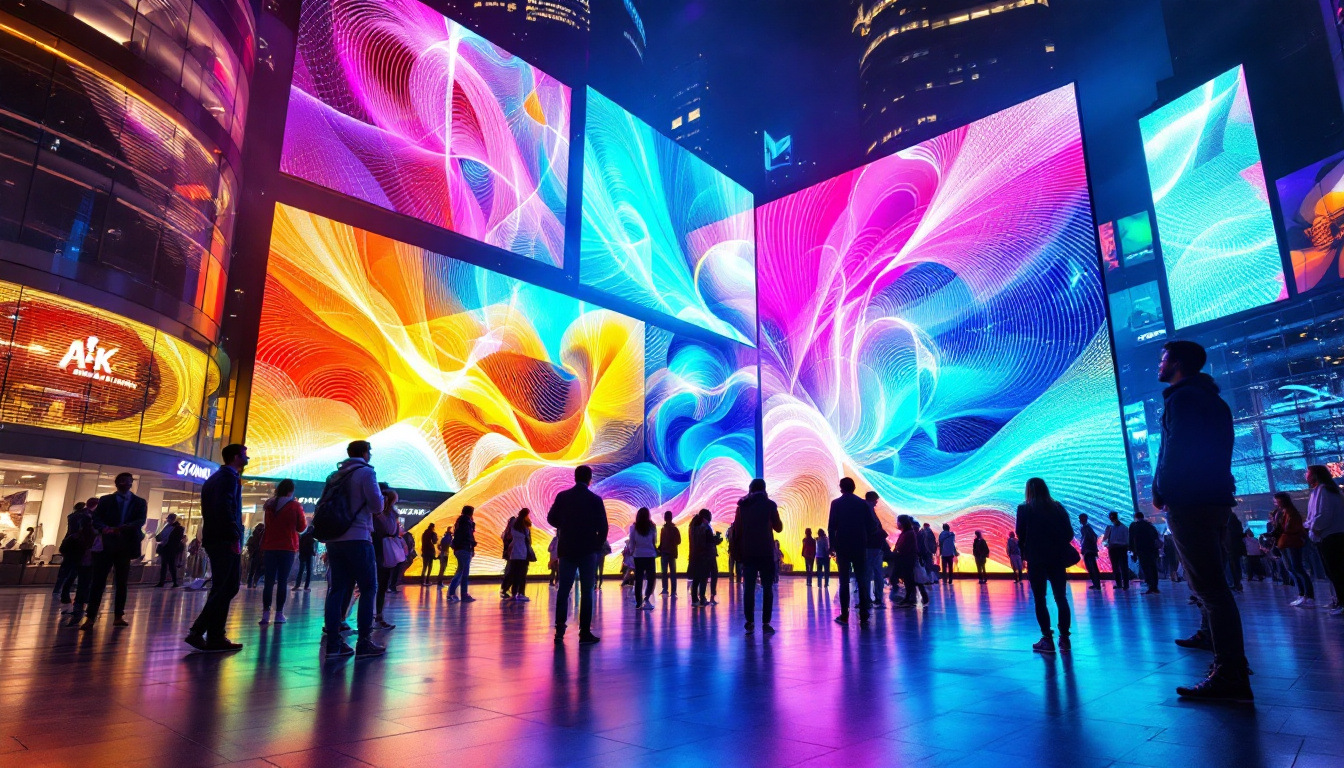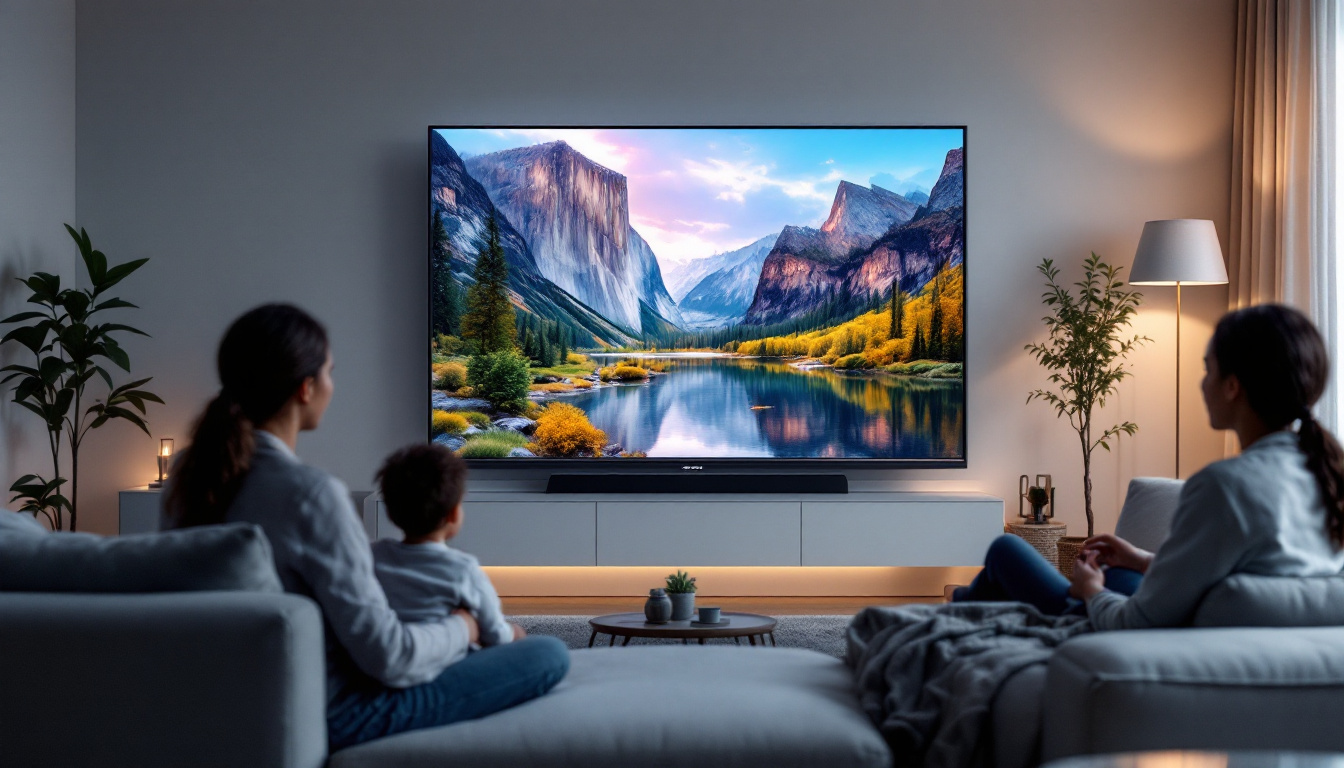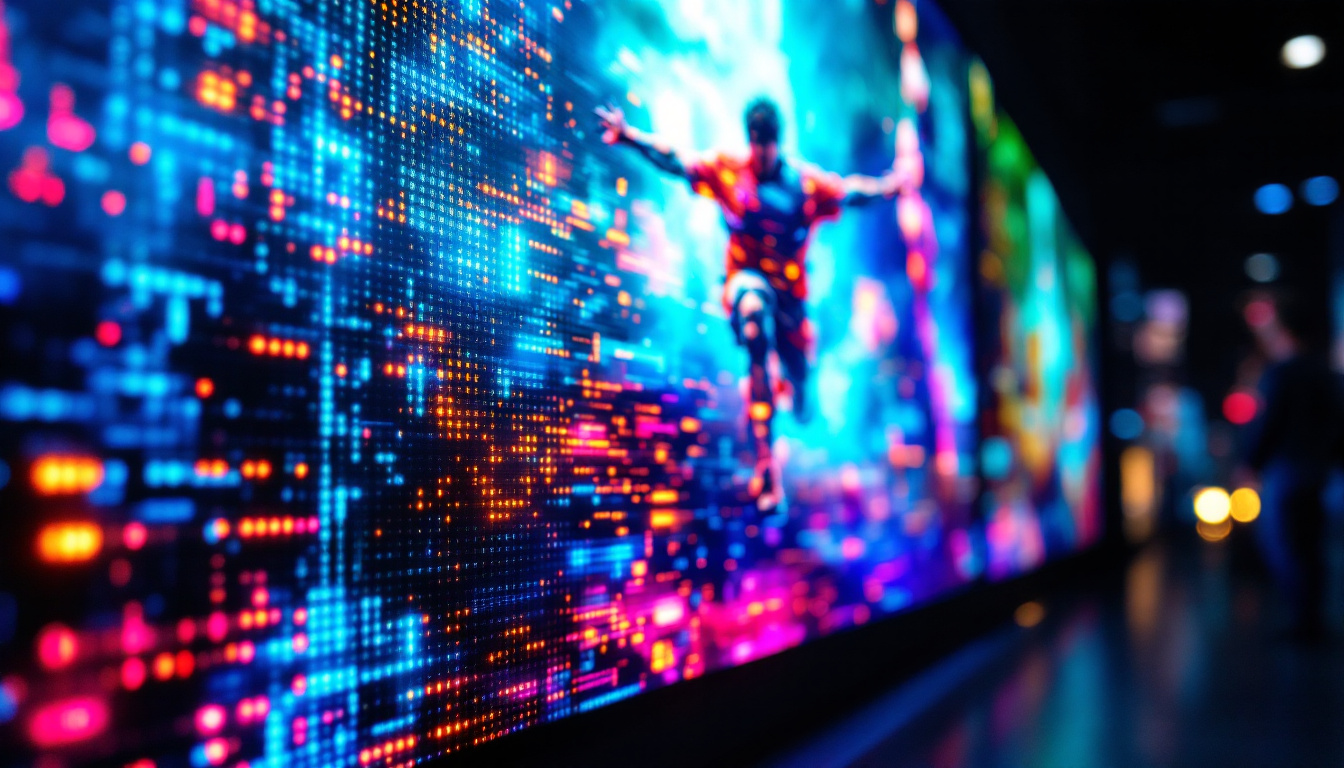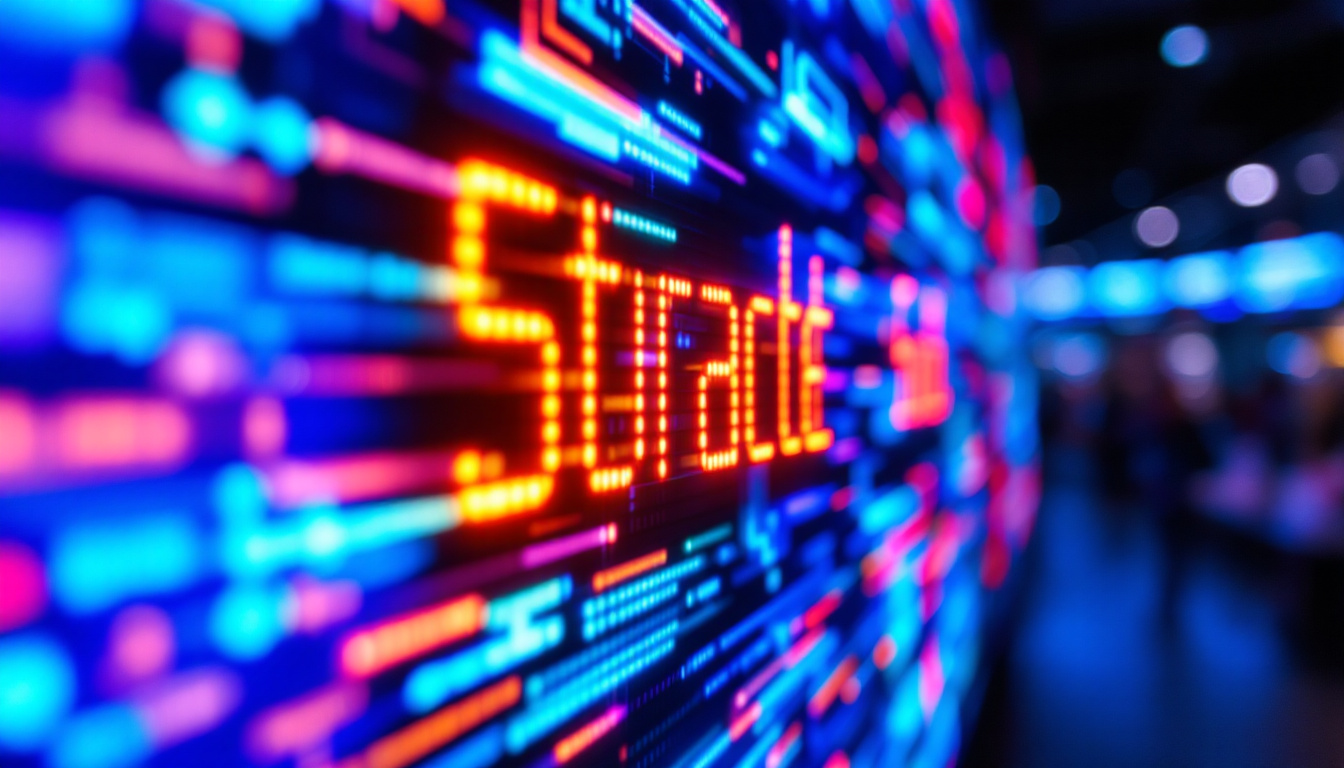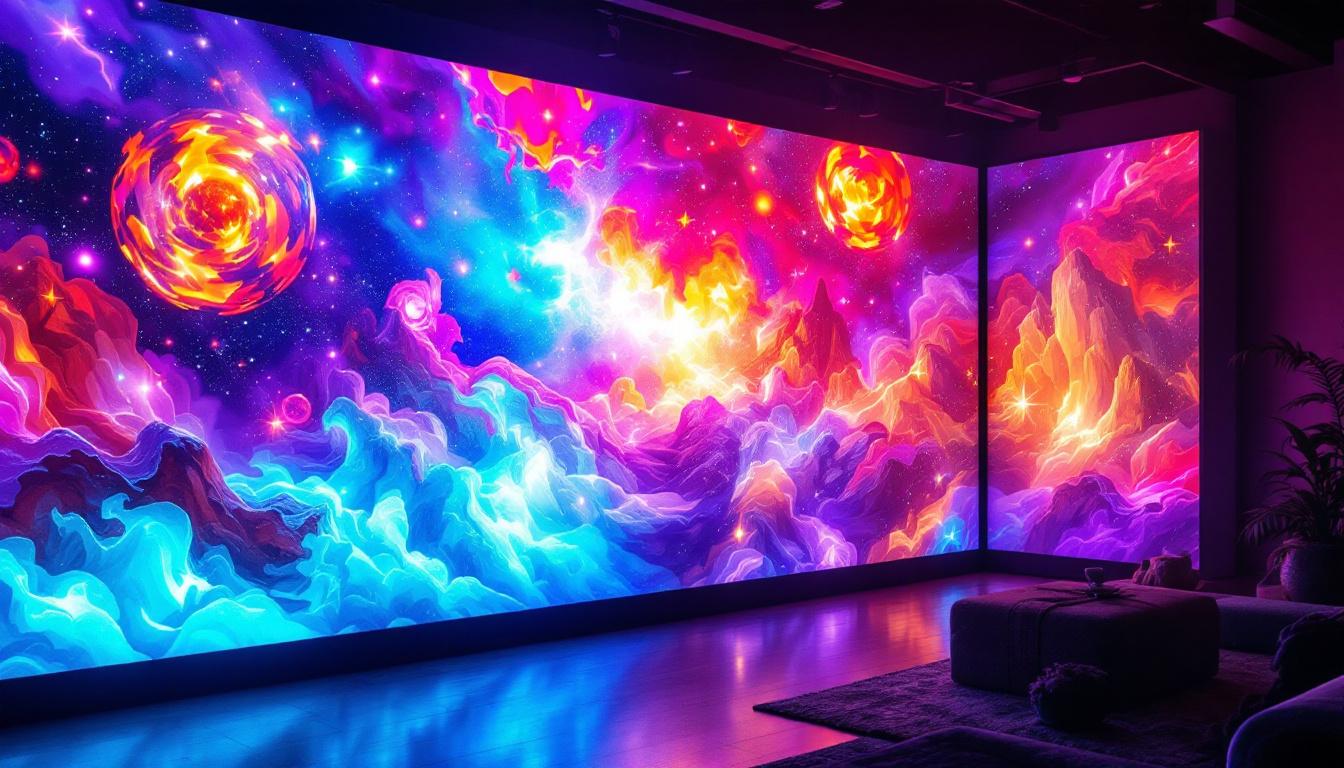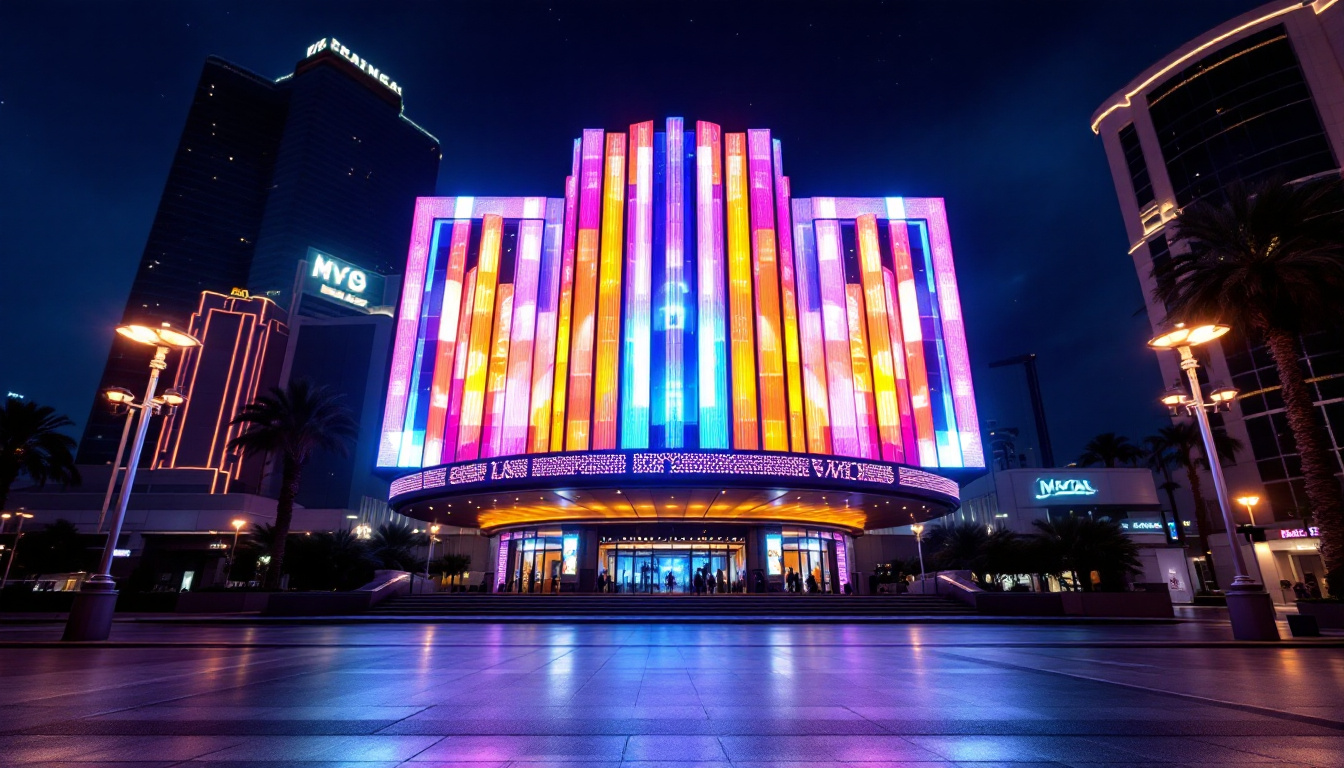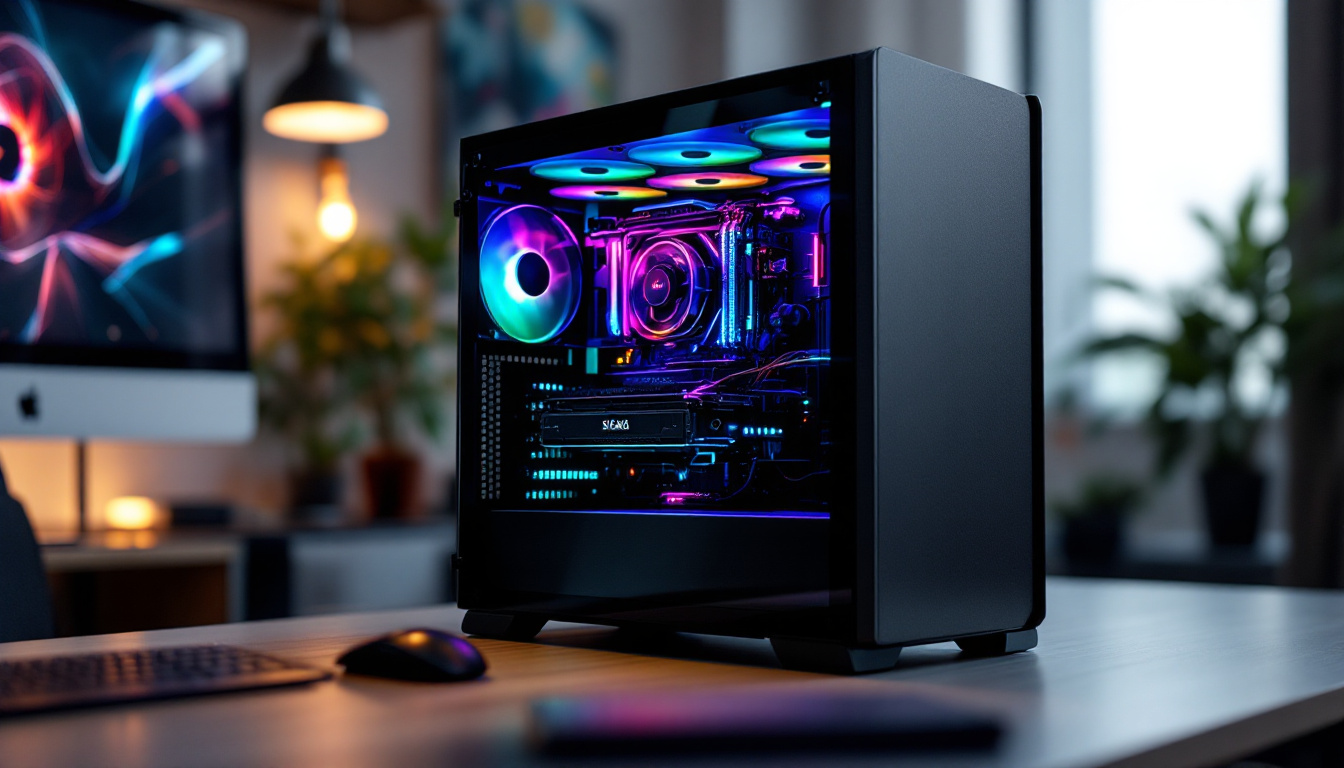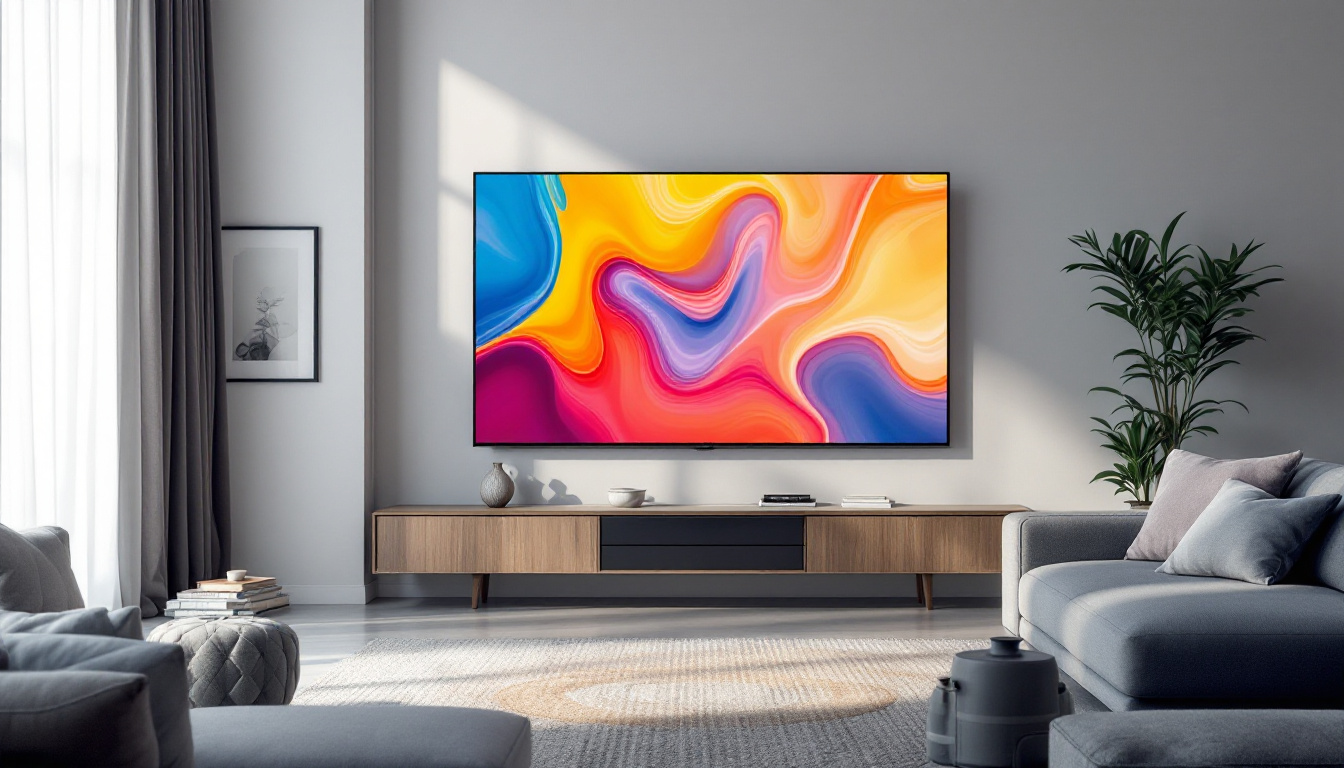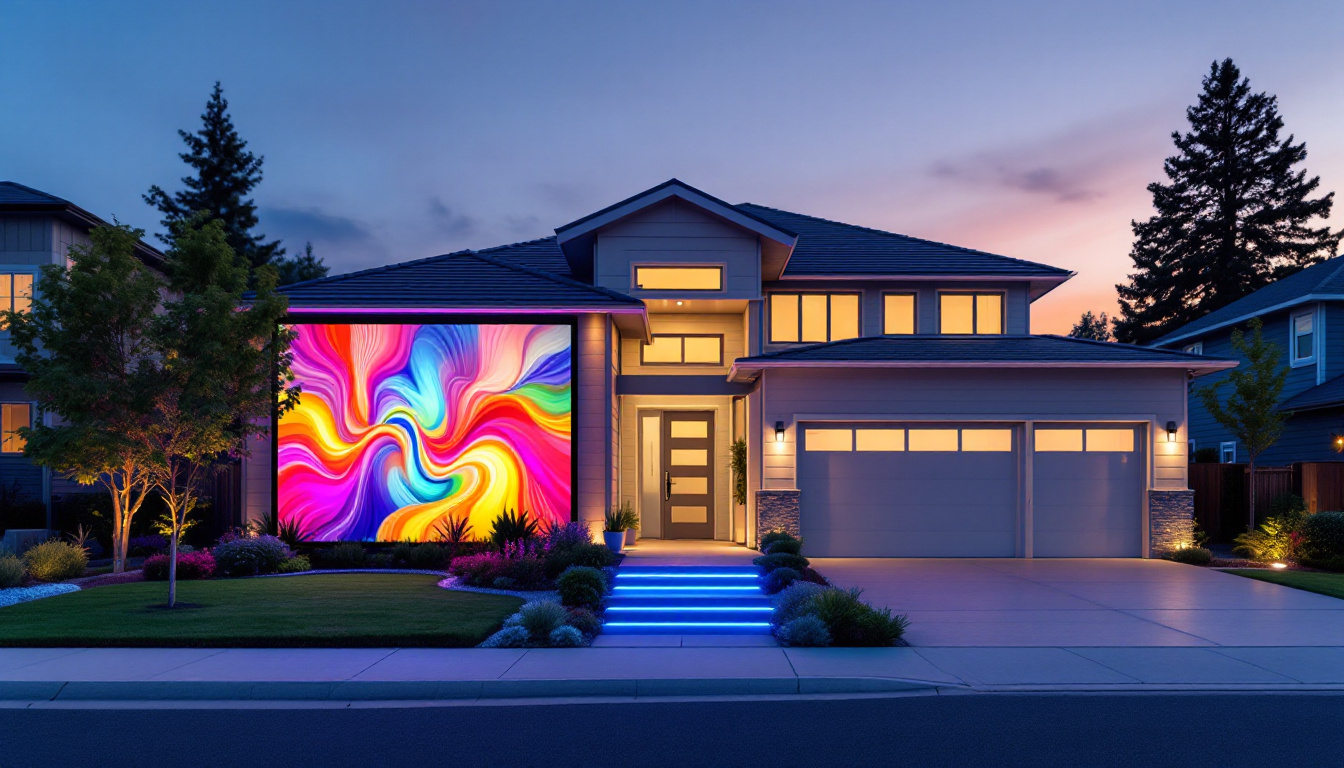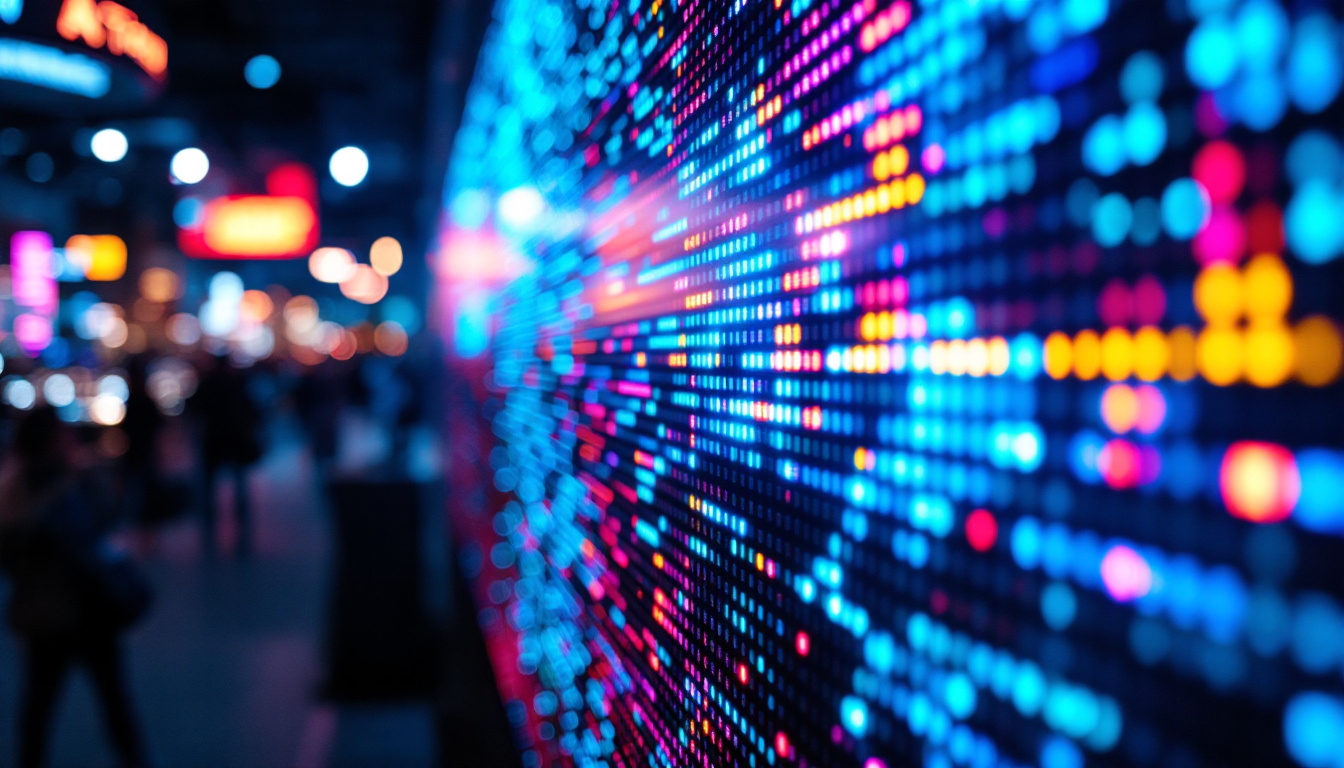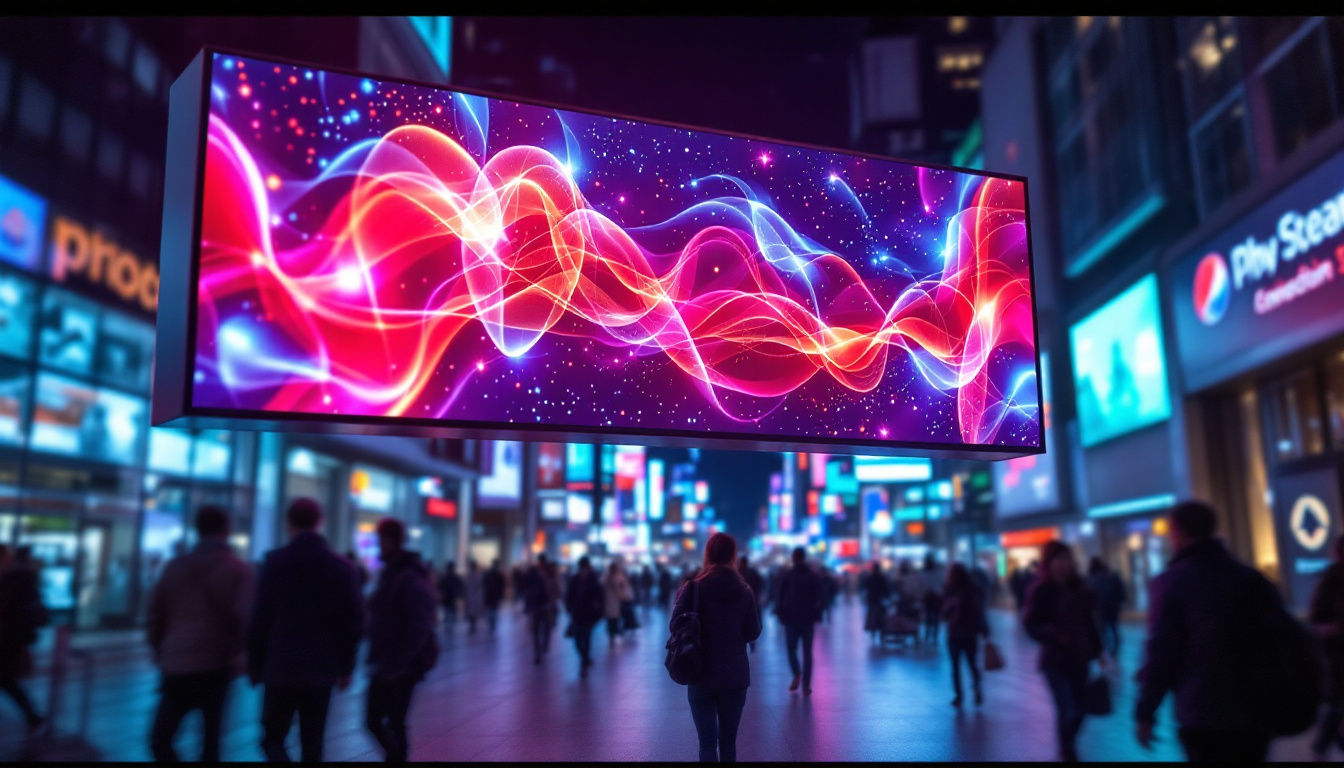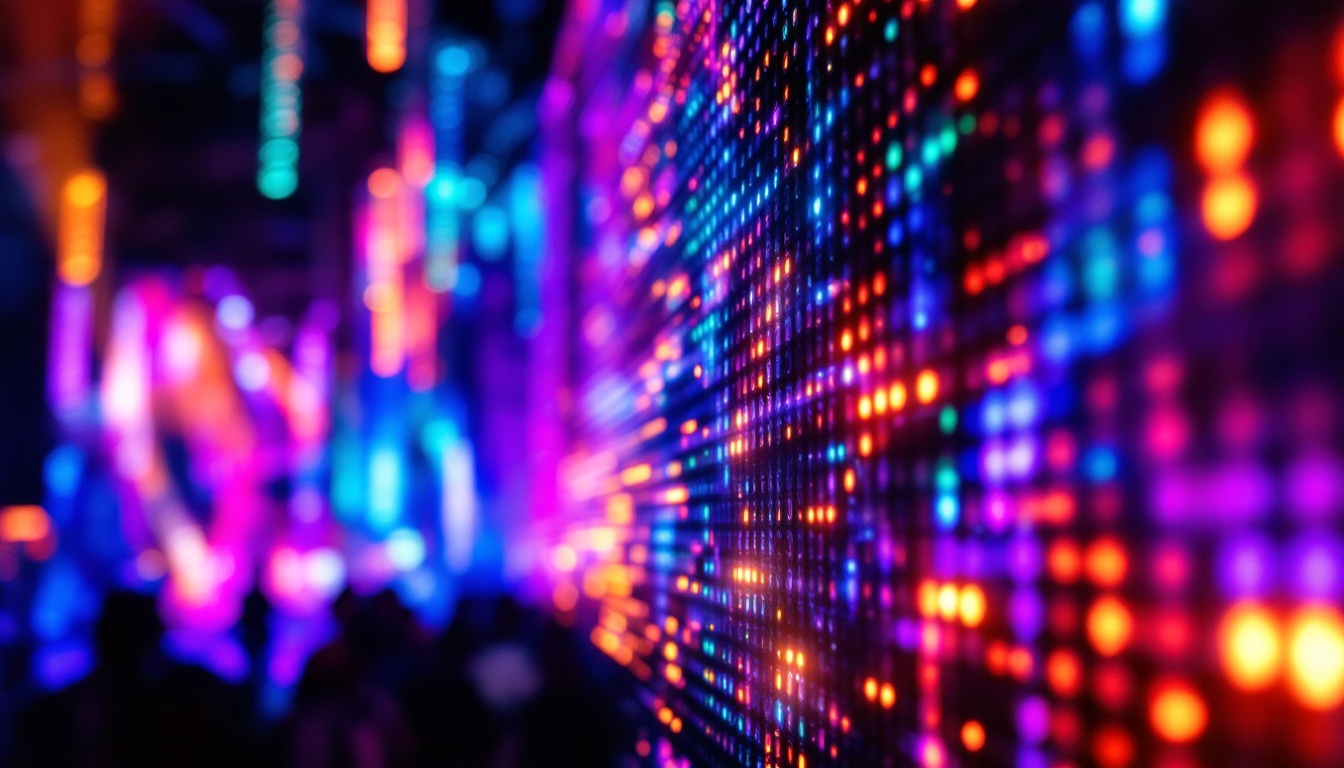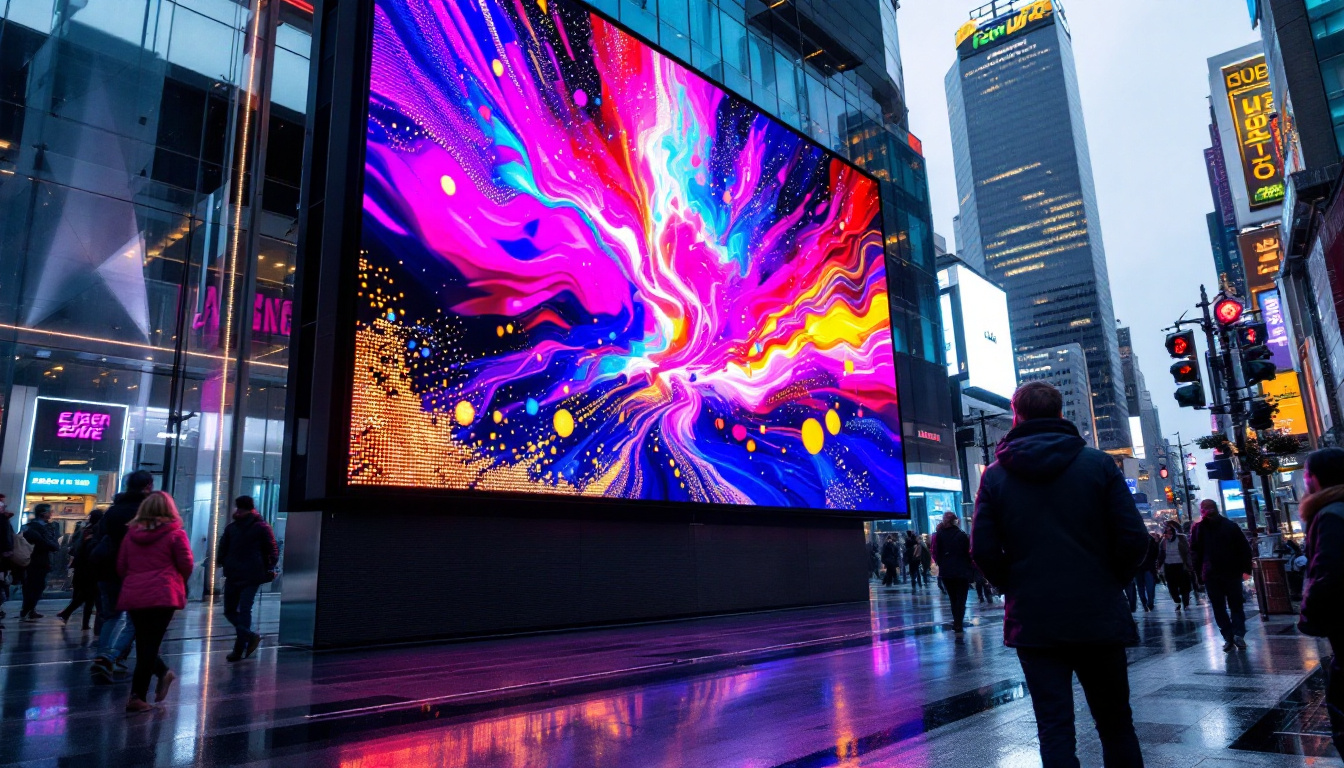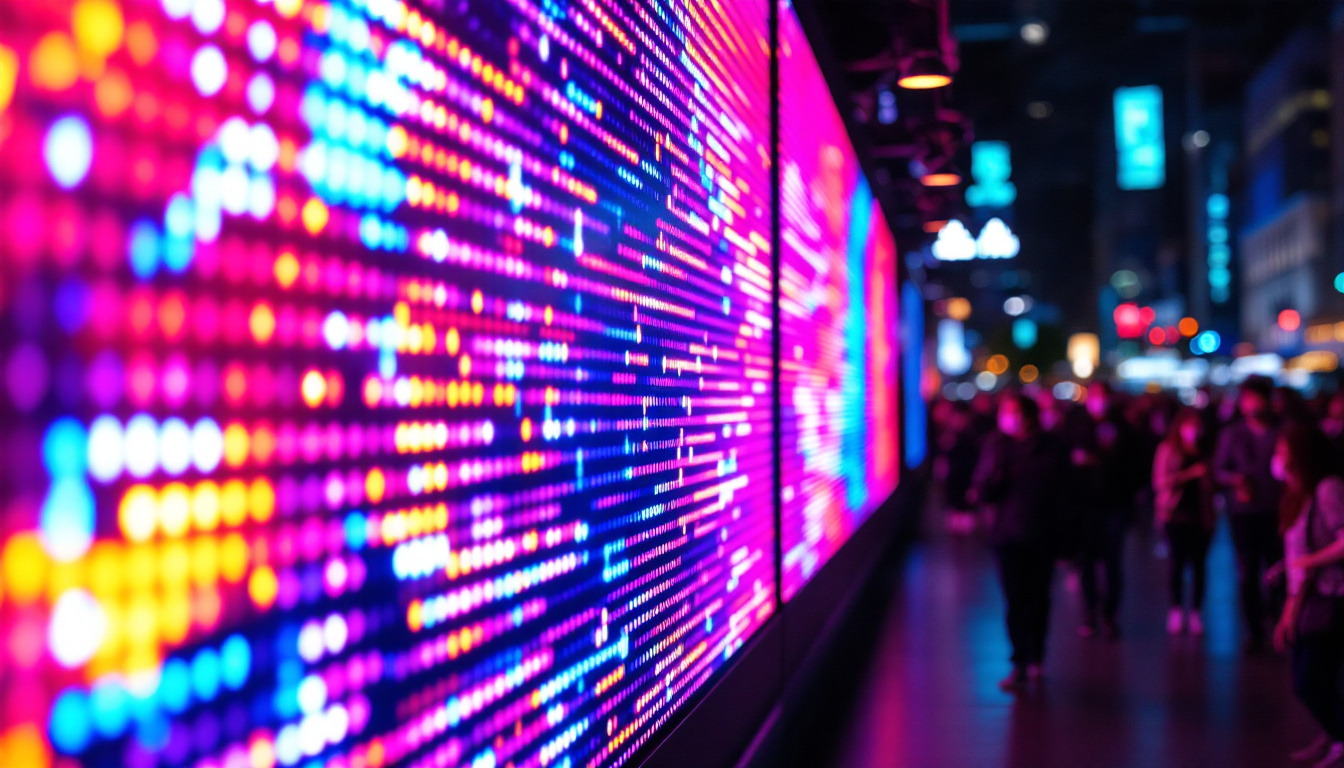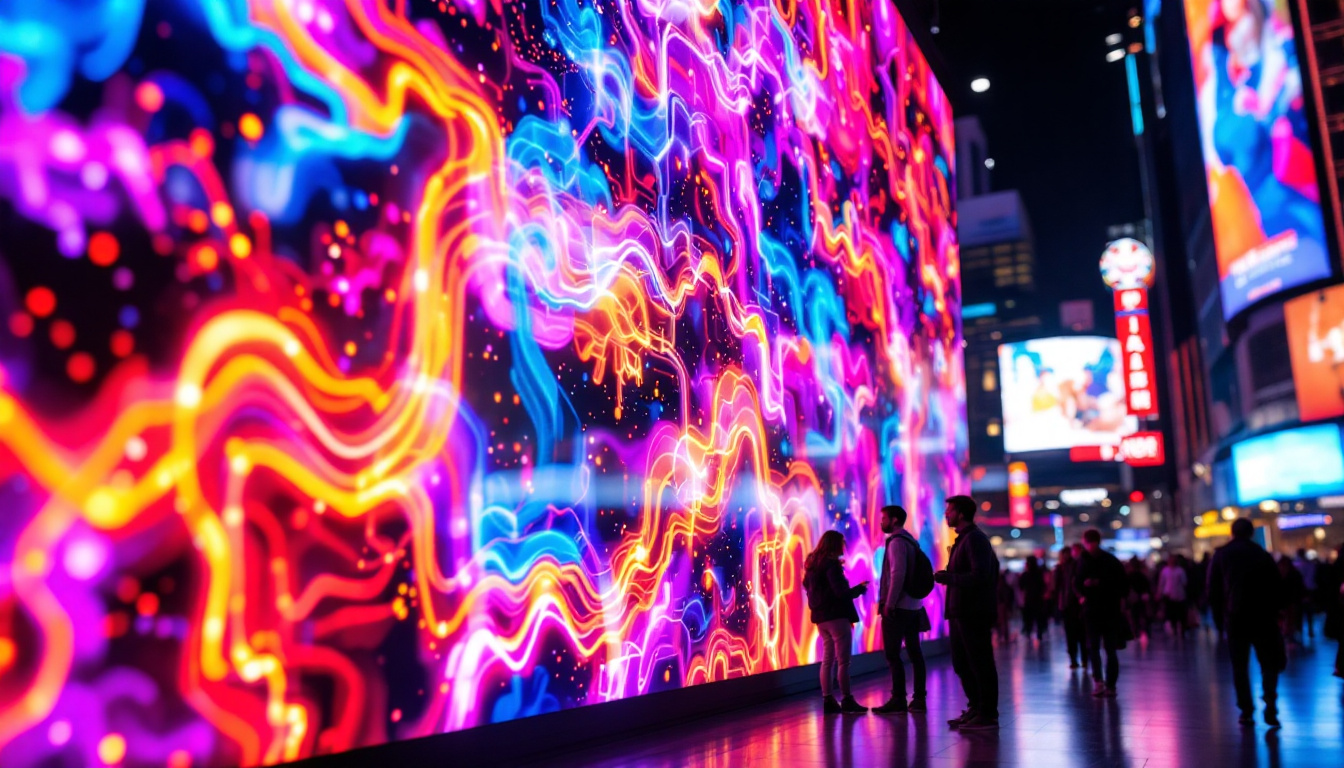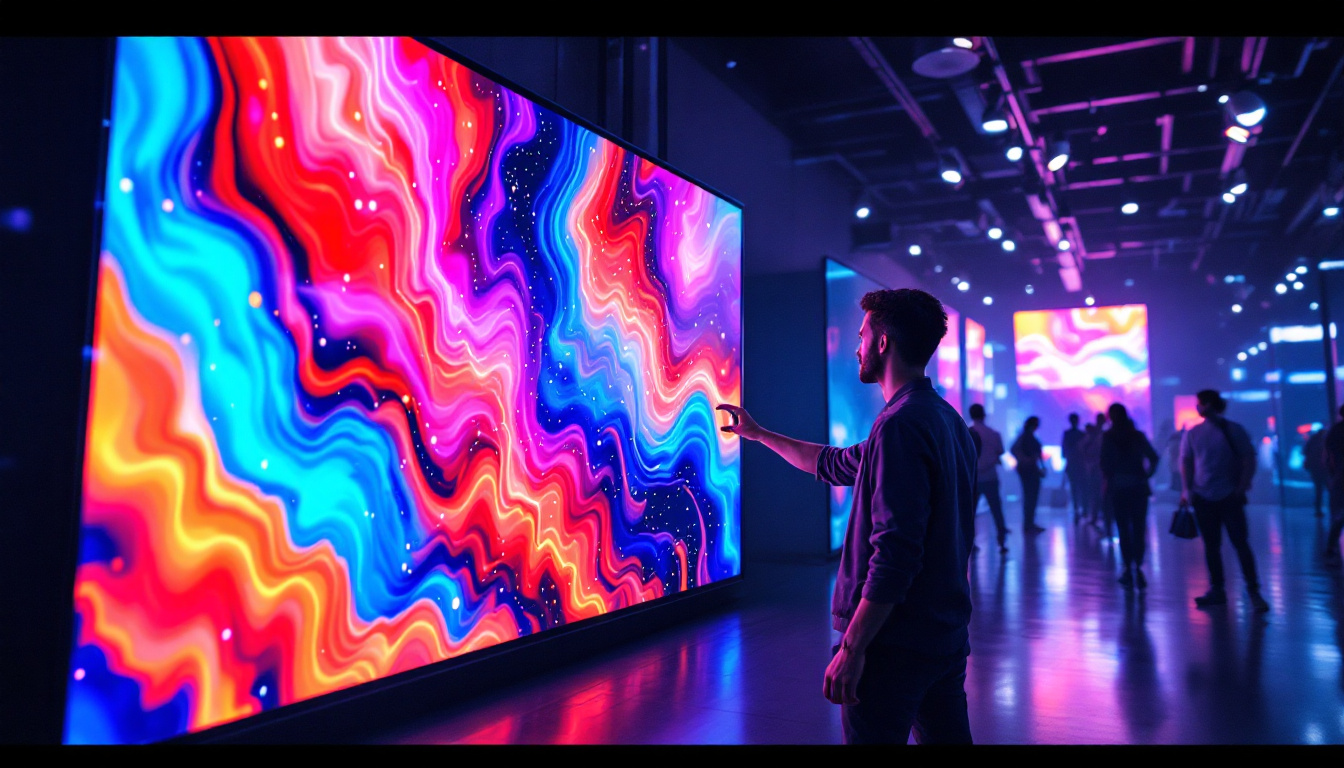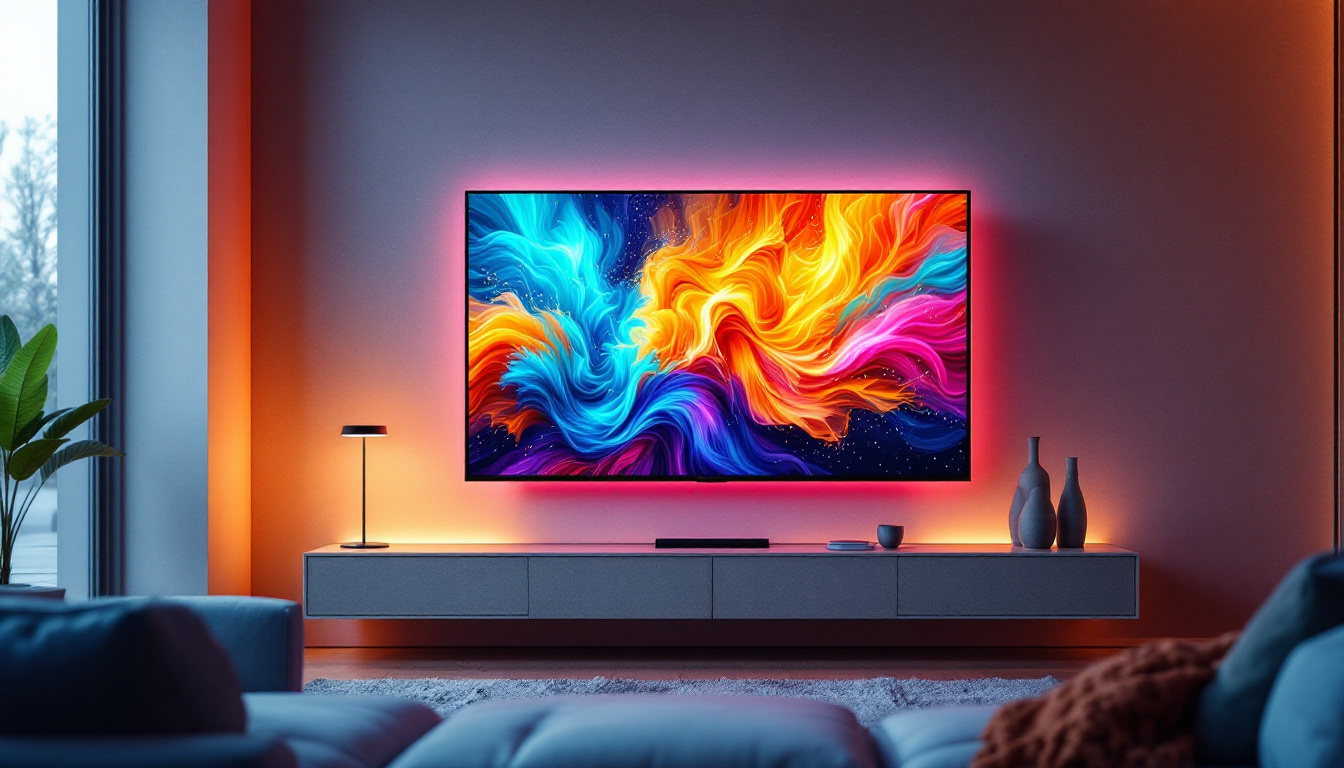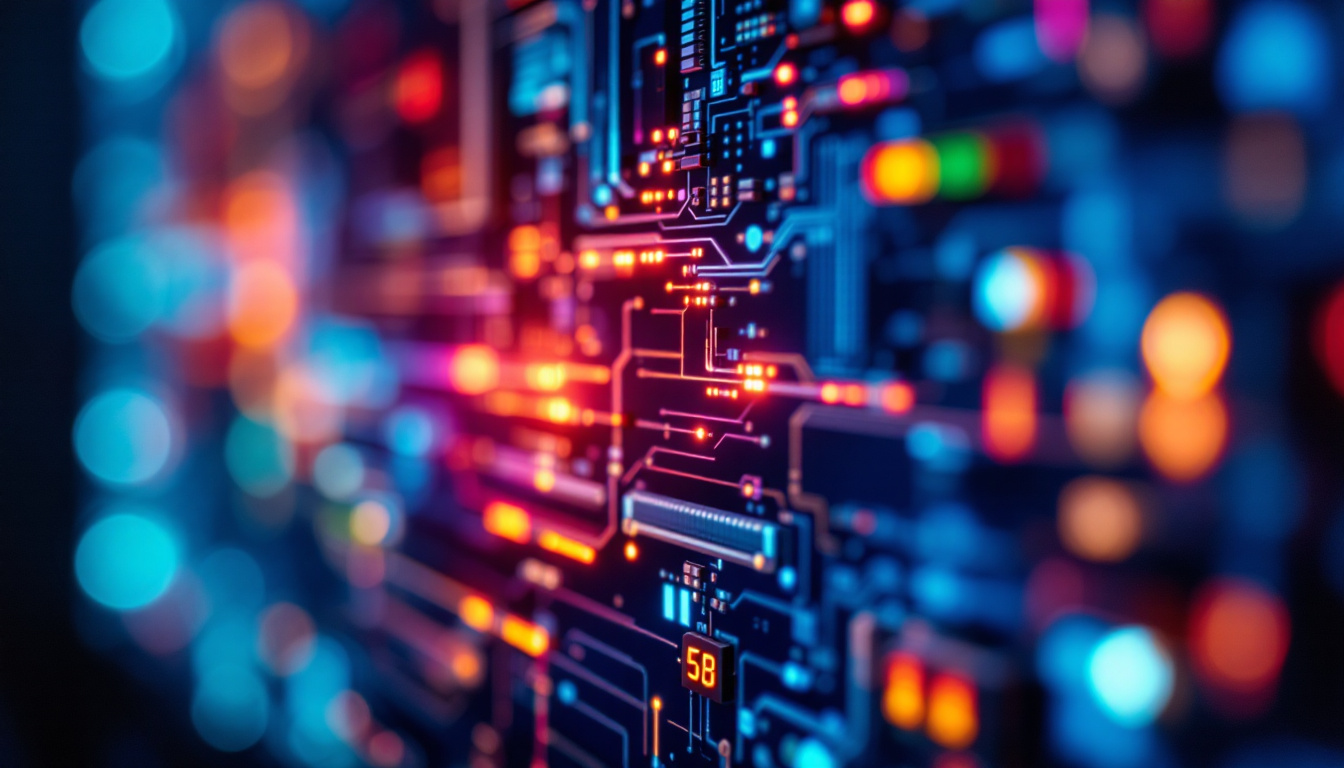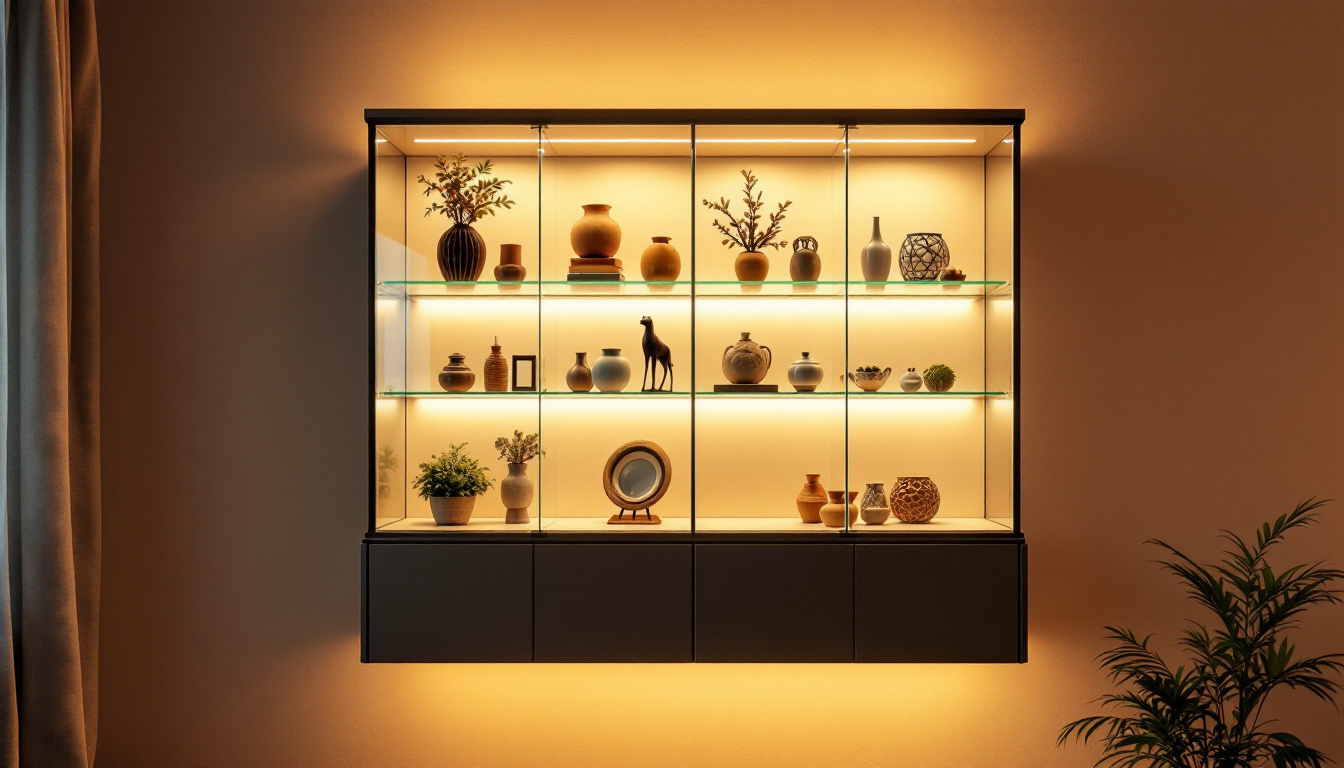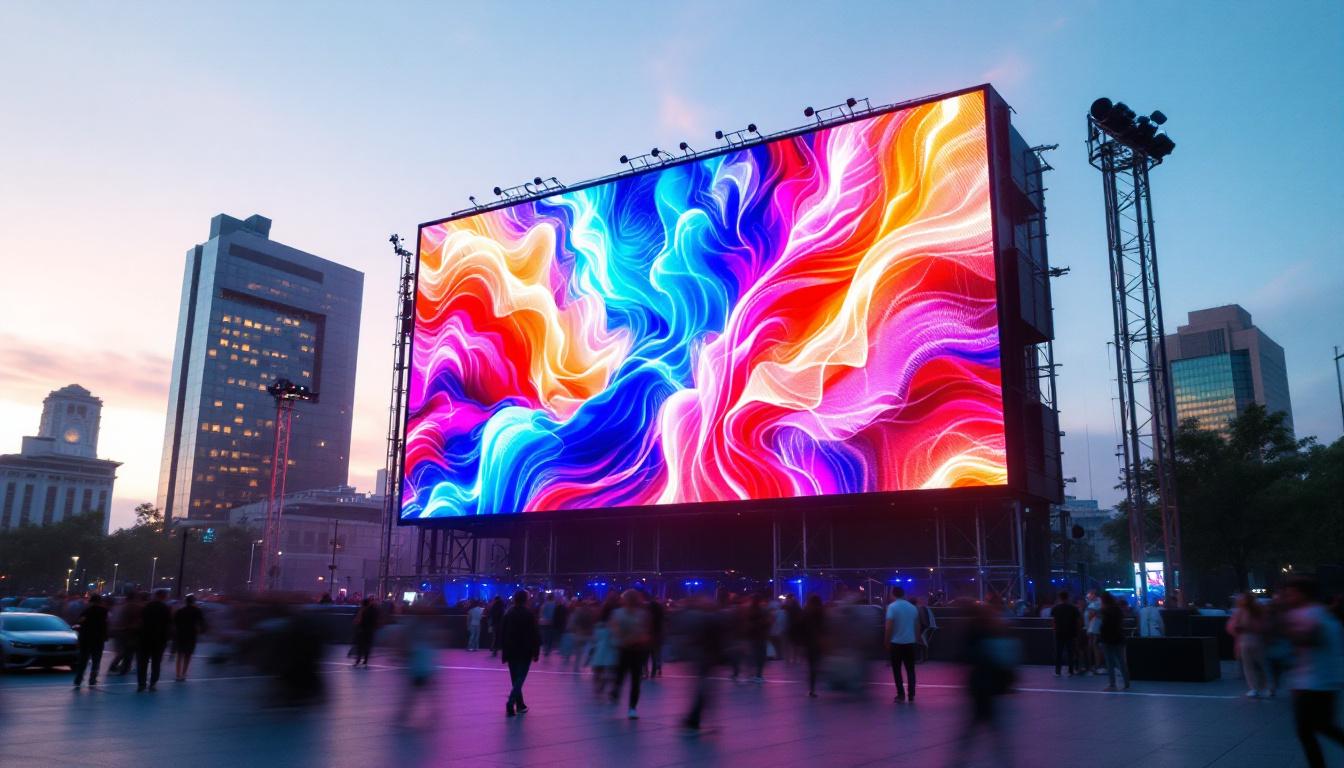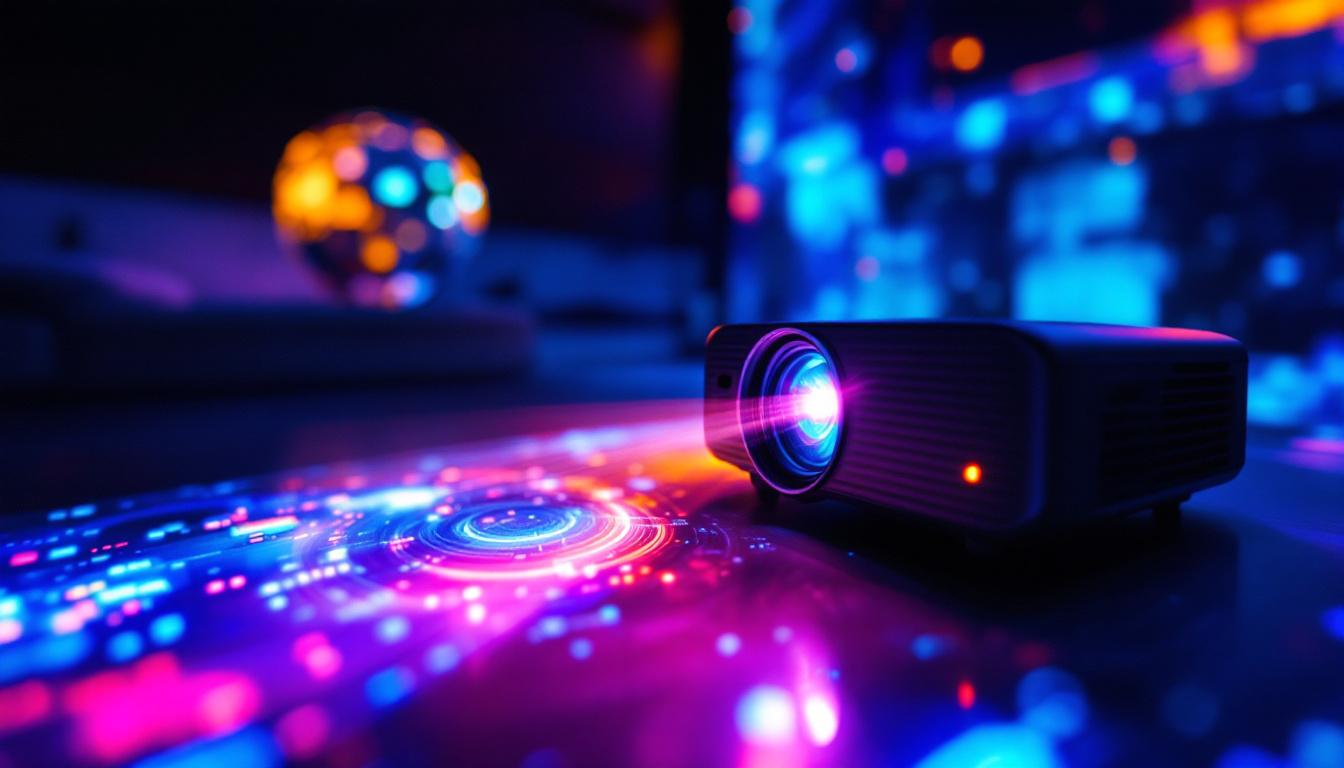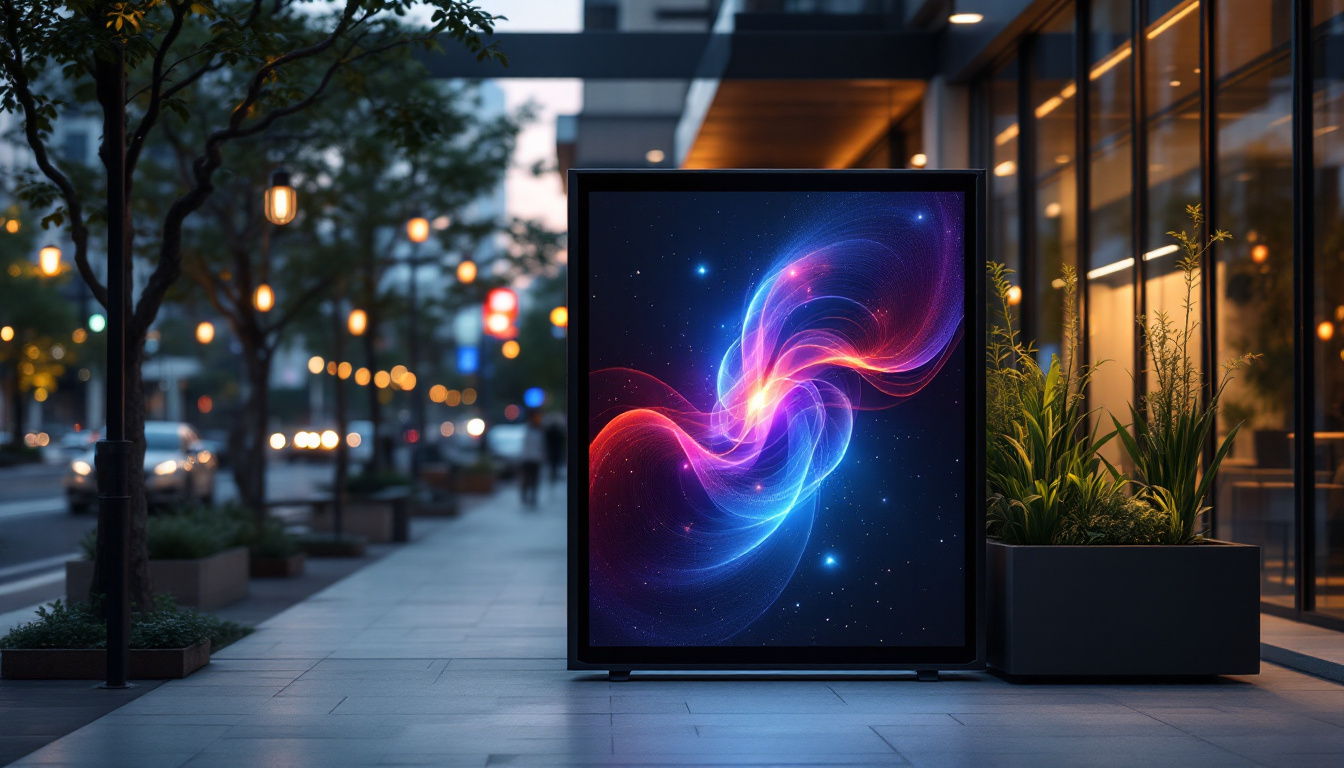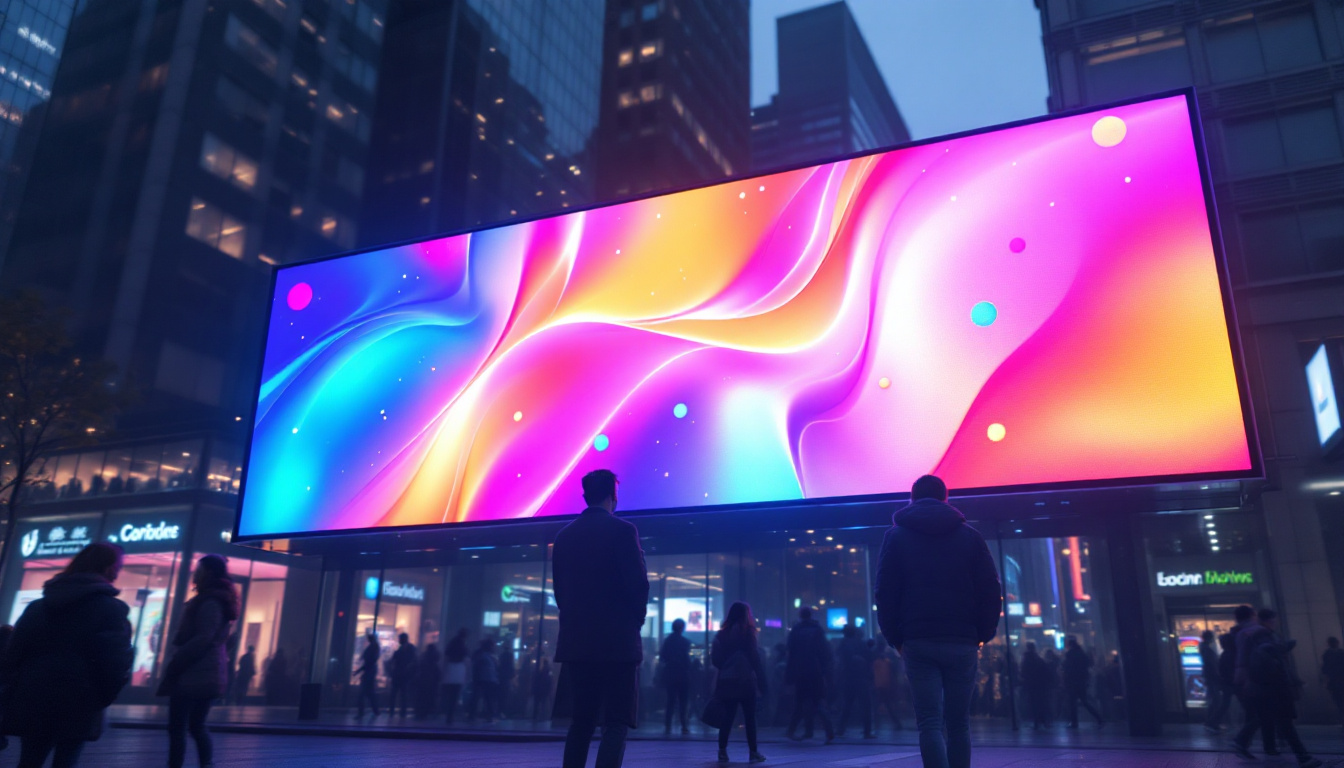In today’s digital age, LED displays have become an integral part of advertising and information dissemination. From billboards to storefronts, these vibrant screens capture attention and convey messages effectively. This article delves into the world of LED displays, exploring their technology, applications, and advantages.
Understanding LED Technology
LED, or Light Emitting Diode, is a semiconductor device that emits light when an electric current passes through it. This technology has revolutionized the way displays are created and utilized, offering numerous benefits over traditional lighting methods. The efficiency of LEDs is remarkable; they consume significantly less energy than incandescent bulbs and have a much longer lifespan, often exceeding 25,000 hours. This longevity not only reduces replacement costs but also minimizes waste, making LEDs a more environmentally friendly option.
How LED Displays Work
At the core of an LED display are thousands of tiny diodes that work together to create images and videos. Each diode can emit different colors, and by combining these colors, a full spectrum of hues can be produced. The arrangement of these diodes forms pixels, which are the building blocks of any LED screen. The technology behind these displays allows for precise color mixing, resulting in vibrant visuals that can captivate audiences. Additionally, advancements in LED technology have led to the development of high dynamic range (HDR) displays, which enhance contrast and color accuracy, providing an even more immersive viewing experience.
When an electric current is applied, the diodes light up, creating a bright and vivid display. The intensity and color of the light can be controlled by adjusting the voltage, allowing for dynamic content that can change in real-time. This capability is particularly beneficial for advertising and entertainment, where engaging visuals can attract attention and convey messages effectively. Furthermore, the rapid response time of LEDs means that they can display fast-moving images without blurring, making them ideal for sports events and live performances.
Types of LED Displays
There are several types of LED displays, each designed for specific applications. The most common types include:
- Indoor LED Displays: These are typically used in venues such as theaters, shopping malls, and conference centers. They offer high resolution and brightness, making them suitable for close viewing. Indoor displays often feature advanced technologies like pixel pitch optimization, which enhances image clarity and detail, ensuring that every seat in the audience has a great view.
- Outdoor LED Displays: Designed to withstand weather conditions, outdoor displays are larger and brighter, ensuring visibility even in direct sunlight. These displays often come with protective coatings and robust housings to guard against rain, dust, and extreme temperatures, making them a reliable choice for billboards and public information displays.
- Transparent LED Displays: These innovative displays allow light to pass through, making them ideal for storefronts and exhibitions where visibility from both sides is essential. They create a unique visual experience, blending the digital and physical worlds, and are increasingly being used in retail environments to showcase products while maintaining an open and inviting atmosphere.
Applications of LED Displays
LED displays have found applications across a wide range of industries, transforming how information is presented and consumed. Some notable applications include:
Advertising and Marketing
One of the most prominent uses of LED displays is in advertising. Billboards and digital signage in urban areas attract attention with vibrant colors and moving images. Brands leverage this technology to create eye-catching advertisements that stand out in a crowded marketplace.
Moreover, the ability to change content quickly allows businesses to promote different products or services throughout the day, maximizing their advertising potential. This dynamic capability not only enhances consumer engagement but also allows for targeted marketing strategies, where specific demographics can be reached at optimal times. For instance, a coffee shop might advertise morning specials during rush hour, while a bar might promote happy hour deals in the evening, ensuring that the right message reaches the right audience at the right time.
Events and Entertainment
LED displays are essential in the entertainment industry, used in concerts, sports events, and festivals. Large screens provide audiences with a better viewing experience, displaying live feeds, graphics, and animations that enhance the overall atmosphere.
In addition, event organizers can use LED displays for branding, sponsorships, and real-time updates, ensuring that attendees remain engaged and informed. The versatility of LED technology allows for creative installations, such as immersive environments where the display itself becomes part of the artistic experience. For example, at music festivals, LED walls can be synchronized with the music, creating a multisensory experience that captivates audiences and elevates performances to new heights.
Information Dissemination
Public spaces such as airports, train stations, and shopping malls utilize LED displays for information dissemination. These screens provide travelers with real-time updates on schedules, directions, and emergency announcements, improving the overall experience and safety.
In educational institutions, LED displays can be used to share important announcements, schedules, and event information, fostering a more connected community. Beyond mere announcements, these displays can also serve as interactive learning tools, showcasing educational content, student achievements, or even live feeds from lectures and events. This not only keeps students informed but also creates a vibrant atmosphere where information is shared in a visually appealing manner, encouraging engagement and participation from the student body.
Advantages of LED Displays
The popularity of LED displays can be attributed to their numerous advantages over traditional display technologies. Some key benefits include:
Energy Efficiency
LED displays consume significantly less energy compared to traditional LCD or CRT displays. This energy efficiency not only reduces operational costs but also minimizes environmental impact, making LED technology a more sustainable choice. In fact, the reduced energy consumption translates to lower carbon footprints, which is increasingly important in today’s eco-conscious world. Businesses and consumers alike are now more aware of their energy usage, and opting for LED displays can contribute to a greener planet.
Longevity and Durability
LED displays have a longer lifespan, often lasting over 100,000 hours. This durability means less frequent replacements and lower maintenance costs. Additionally, they are resistant to shock and vibration, making them suitable for various environments. This robustness is particularly beneficial in commercial settings, where displays may be subjected to heavy use or harsh conditions. Furthermore, the long lifespan of LED technology reduces electronic waste, aligning with global efforts to promote sustainability and responsible consumption.
High Brightness and Contrast
LED technology offers superior brightness and contrast ratios, ensuring that images and videos remain clear and vibrant, even in brightly lit conditions. This quality makes LED displays ideal for outdoor applications where visibility is crucial. Moreover, the ability to produce rich colors enhances the viewing experience, making them popular in entertainment venues, advertising, and public information displays. The versatility of LED technology allows for creative installations, such as large-scale video walls or dynamic signage, which can capture attention and convey messages effectively.
Versatility in Applications
Another significant advantage of LED displays is their versatility across various applications. From retail environments showcasing dynamic advertisements to sports arenas displaying real-time scores and highlights, the adaptability of LED technology is unmatched. Furthermore, they are increasingly being used in smart city initiatives, where LED displays serve as information hubs, providing real-time updates on traffic, weather, and public transportation. This multifunctionality not only enhances communication but also enriches the urban experience for residents and visitors alike.
Improved Viewing Angles
LED displays also offer improved viewing angles compared to traditional display technologies. This means that images and videos can be viewed clearly from various positions, making them ideal for large gatherings or public spaces. Whether in a conference room or an outdoor event, the wide viewing angles ensure that everyone has a great experience, regardless of where they are situated. This feature is particularly beneficial for presentations, concerts, and sporting events, where audience engagement is key to success.
Challenges and Considerations
While LED displays offer numerous advantages, there are also challenges and considerations to keep in mind when implementing this technology.
Initial Costs
The initial investment for LED displays can be higher than traditional display technologies. However, the long-term savings in energy and maintenance costs often justify the upfront expense.
Viewing Angles
Some LED displays may have limited viewing angles, which can affect visibility for audiences positioned at certain angles. It is essential to consider the placement and design of the display to ensure optimal viewing for all spectators.
Content Management
Effective content management is crucial for maximizing the impact of LED displays. Businesses must invest in software and training to create and manage dynamic content effectively. Without proper management, the potential of LED displays may not be fully realized.
Future Trends in LED Display Technology
The LED display market is continuously evolving, with new trends and innovations emerging regularly. Some of the future trends to watch include:
Advancements in MicroLED Technology
MicroLED technology is gaining traction as a next-generation display solution. It offers even higher resolution and brightness while maintaining energy efficiency. As this technology matures, it may redefine the standards for display quality.
Integration with Smart Technology
As smart technology becomes more prevalent, LED displays are expected to integrate seamlessly with IoT devices. This integration will enable real-time data sharing and interactive experiences, enhancing user engagement.
Flexible and Curved Displays
Flexible LED displays are becoming increasingly popular, allowing for creative installations that can conform to various shapes and surfaces. This flexibility opens up new possibilities for advertising and design, enabling brands to think outside the box.
Conclusion
LED displays have transformed the way information is presented and consumed across various industries. Their vibrant colors, energy efficiency, and versatility make them a preferred choice for advertising, entertainment, and information dissemination. As technology continues to advance, the potential for LED displays will only grow, paving the way for innovative applications and experiences.
Understanding the technology, applications, and future trends of LED displays is essential for businesses looking to leverage this powerful medium. By embracing LED technology, organizations can enhance their visibility, engage their audiences, and stay ahead in an increasingly competitive landscape.
Discover LumenMatrix’s Innovative LED Solutions
As you consider the vast potential and benefits of LED displays for your business, take the next step with LumenMatrix. With our commitment to innovation and quality, LumenMatrix offers a wide array of LED display solutions that cater to your unique needs. From Indoor and Outdoor LED Wall Displays to specialized options like Vehicle, Sports, and Floor LED Displays, our products are designed to captivate your audience and amplify your message. Experience the future of visual communication with our Custom, All-in-One, and Transparent LED Displays. Check out LumenMatrix LED Display Solutions today and see how we can help transform your brand’s visibility and engagement.

